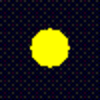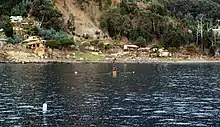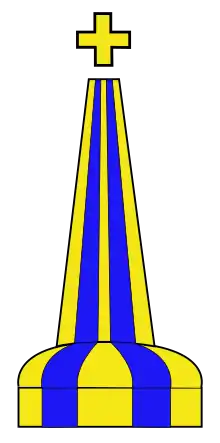


An Emergency wreck buoy is used to warn of a new wreck which has not yet been listed in maritime documents. The buoy is expected to be deployed for the first 24-72 hours after the wreck occurs. After that time more permanent buoyage (such as isolated danger marks or cardinal marks) should be deployed and charts updated.[1]
The buoy is designed to "provide a clear and unambiguous"[1] mark of a new and uncharted danger. The buoy is painted with 4, 6 or 8 vertical stripes of alternate yellow and blue. In addition it may have the word "WRECK" painted on it. Optionally it may carry a vertical (St. George's) cross painted yellow. The light flashes alternate yellow and blue for one second each with a half second gap between. No other navigation mark uses blue.[2]
The International Association of Marine Aids to Navigation and Lighthouse Authorities (IALA) defined the buoy in response to the sinking of the MV Tricolor and the subsequent collisions with the wreck by the Dutch vessel Nicola and Turkish-registered fuel carrier Vicky.[3]
See also
References
- 1 2 Emergency Wreck Buoys, Trinity House, archived from the original on 2 July 2014, retrieved 24 December 2017
- ↑ Maritime buoyage system and other aids to navigation, IALA (International Association of Maritime Aids to Navigation and Lighthouse Authorities), 2010, p. 18
- ↑ IALA (2005), IALA recommendation O-133 on emergency wreck marking buoy (PDF) (1 ed.), p. 3, retrieved 29 May 2023